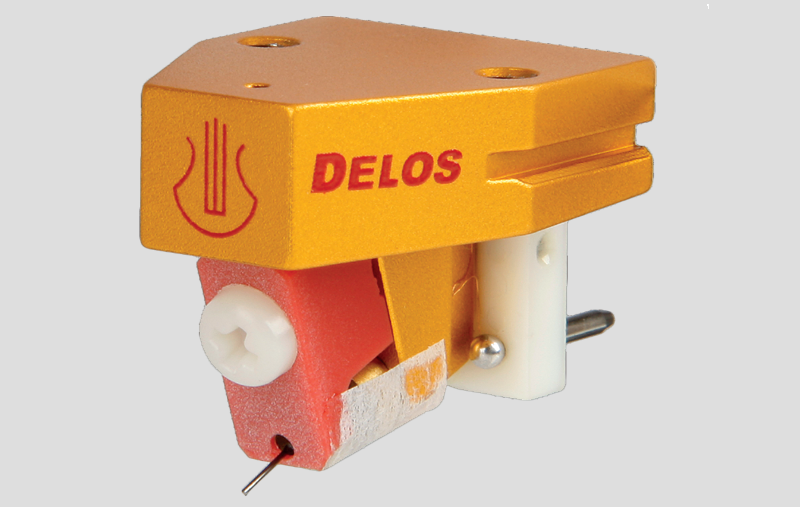LYRA
The Lyra Delos Review
Hi Fi Critic 05 May 2015 Full Review
The £1000 Delos is a skeletal design, so all its internal workings are on view and it’s therefore rather more vulnerable to damage than most. A strong stylus guards slots into machined grooves. It is medium mass and medium priced.

The healthy 0.6mV speci?c output will also allow it to be used with most typical phono stages. Lyra asserts that if you use clever engineering, it doesn’t necessarily cost an exorbitant amount of money to make a great sounding cartridge. It claims that one of its design tricks is to set the suspension so that when it’s working with normal tracking force for playback the signal coils have the same angle as the magnetic circuit. This is achieved by using a new body structure with a pre-angled damping system. It is set up so when tracking force is applied the generator is perfectly aligned. Thus the cartridge signal output is optimised when playing a record.
In this instance, a microridge stylus is mated to a solid boron cantilever, and the body is machined from a solid aluminium billet, with angled sides to help minimise resonance. The coils themselves are wound using 6N copper wire onto a high purity iron former.
The silver-plated connection pins seem to be a slightly smaller diameter than standard, so do make sure the right termination tags are available when mounting the cartridge, and that they are tight. No tags are provided with the cartridge, but it does come with stainless steel Allen bolts of various lengths, together with an appropriate key, so a pair should suit the headshell of the tonearm being used. A useful stylus brush is also included.
The comprehensive instructions include considerable data on cartridge loading and set-up. The cartridge body has tapped mounting holes, which always makes the installation job easier. Despite the non square shape of the cartridge it proved fairly easy to set up, and the downforce was set to 1.75g (recommended 1.7-1.8g). I also found that it really favoured the use of bias, and that best results were obtained when this was set by ear (as it’s quite obvious when it’s not correct). During this process we also noticed that needle talk was very low and that the cartridge was very stable in the grove when the set up was just right.